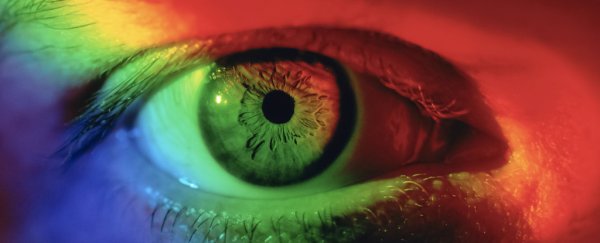In a development that could restore sight to thousands of people with an inheritable condition called Leber's Hereditary Optic Neuropathy (LHON), scientists have been able to improve vision in both eyes in a majority of patients – even though only one eye was actually treated.
The treatment is an experimental type of gene therapy, where tailored genetic material is injected to counteract genes that are defective or malfunctioning. With LHON, a m.11778G>A mutation in the MT-ND4 gene is the target.
In a phase 3 clinical trial, 37 patients were treated with a modified viral vector rAAV2/2-ND4 in one eye only, leading to an average vision improvement of 15 letters on the standard ETDRS chart you might have spotted at an optician's clinic.
"We expected vision to improve in the eyes treated with the gene therapy vector only," says neuro-ophthalmologist Patrick Yu-Wai-Man, from the University of Cambridge.
"Rather unexpectedly, both eyes improved for 78 percent of patients in the trial following the same trajectory over two years of follow-up."
The eyes that didn't get the gene therapy were given a sham treatment instead, and while the improvement wasn't as great, it was still substantial. Those in the earlier stages of LHON typically saw a bigger improvement in their vision from the treatment.
LHON is the most common form of mitochondrial blindness – transmitted from a mother to her children – and attacks the retinal ganglion cells, damaging the optic nerves. Around 1 in 30,000 people are thought to be affected, usually men in their 20s or 30s.
The replacement MT-ND4 gene treatment seems to rescue the retinal ganglion cells from their fate, causing results that can be "life-changing" according to the researchers. Normally less than 20 percent of those affected get their sight back.
"As someone who treats these young patients, I get very frustrated about the lack of effective therapies," says ophthalmologist José-Alain Sahel, from the University of Pittsburgh.
"These patients rapidly lose vision in the course of a few weeks to a couple of months. Our study provides a big hope for treating this blinding disease in young adults."
While scientists know what causes the loss of vision, finding a way to stop it has proved difficult. LHON is a good candidate for gene therapy though, because it has a clear starting stage and genetic targets that are relatively straightforward to hit.
What's not clear yet is why and how the gene therapy is spreading from one eye to the other. Follow-up experiments in macaque monkeys, which have vision systems similar to humans, suggested the injected viral vector can spread to other tissue via some means of interocular diffusion, but more research is going to be needed to understand the mechanisms at work.
Gene therapy is now being used to tackle a wide range of diseases and health issues, including those inherited from parents. Many other eye problems are in the sights of researchers too, and advances in one area can quickly help research in another – something that the team behind the current study is excited about.
"Our approach isn't just limited to vision restoration," says Sahel. "Other mitochondrial diseases could be treated using the same technology."
The research has been published in Science Translational Medicine.
